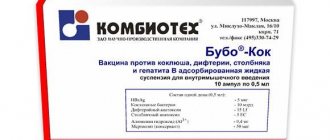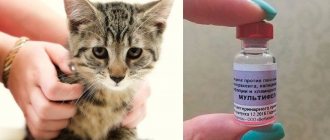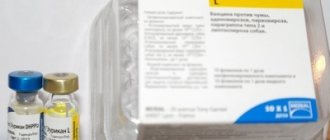Description
The Synflorix vaccine is administered into the anterolateral thigh when immunizing children under 1 year of age and into the deltoid muscle of the shoulder when immunizing children over 1 year of age. A single dose of the vaccine is 0.5 ml. This drug does not provide immunization against diseases caused by serotypes for which antigens are not included in this vaccine.
The optimal level of protection against pneumococcal infection in children aged 6 weeks to 6 months is provided by 3 vaccinations and subsequent booster vaccinations. It is recommended to start vaccination with Synflorix at the age of 2 months, subsequent vaccinations should be done at intervals of 1 month. Revaccination in this case is carried out no earlier than six months after the last vaccination with this vaccine was given - approximately at the age of 12-15 months. Children aged 7-11 months who have not been immunized during the first six months of life can be immunized with this drug using two vaccinations with an interval of 1 month between them and a booster dose administered at least 2 months after the last vaccination of this drug. vaccine - in the second year of life. For children over 12 months of age, a vaccination schedule with Synflorix is recommended, consisting of two vaccinations with a 2-month interval between them.
Description of the drug
The Sinflorix vaccine is a drug for the prevention of pneumococcal infection in children from 6 weeks to 5 years.
Pneumococcal infection is one of the leading causes of child mortality; 800 thousand children under 2 years of age die each year worldwide due to pneumococcal infection. Pneumococcal infection causes a number of dangerous diseases, such as meningitis, pneumonia, bronchitis, otitis media, septicemia, sinusitis, and endocarditis. Often pneumococcal infection occurs in the form of a “regular” ARVI, which complicates diagnosis and increases the risk of developing life-threatening conditions. The Synflorix vaccine contains Haemophilus influenzae D-protein, which helps build immunity to this infection (Haemophilus influenzae). Vaccination against pneumococcal infection is aimed at preventing the disease, as well as reducing complications from pneumococcal infection and deaths.
Indications for use
Prevention of diseases caused by Streptococus pneumoniae (serotypes 1, 4, 5, 6B, 7F, 9V, 14, 18C, 19F and 23F), including sepsis, meningitis, pneumonia, bacteremia and otitis.
The vaccine is intended for use from 6 weeks of life to 5 years.
Special conditions
This vaccine must be administered intramuscularly only. Intravascular or intradermal administration of this drug is prohibited. If immunization was started with the Synflorix vaccine, then the remaining vaccinations should be given with the same drug. Before vaccinating with Synflorix, the doctor must examine the child and find out the medical history in order to identify contraindications to this vaccination. After the vaccine is administered, the child must be under medical supervision for 30 minutes.
Children who have a weakened immune system (due to HIV, immunosuppressive therapy, or a genetic defect) may experience decreased antibody production after receiving this vaccine.
Instructions for use SYNFLORIX™
As with other injectable vaccines, vaccine recipients should be under medical supervision, and medical care should be available in the rare event of an anaphylactic reaction following vaccine administration.
The potential risk of apnea and the need to monitor respiratory function for 48-72 hours should be taken into account when conducting primary immunization in very premature infants (born at ≤28 weeks' gestation) and, especially in children with a history of respiratory immaturity. Due to the high benefits of vaccination for this group of children, its implementation cannot be canceled or postponed.
Synflorix™ should under no circumstances be administered intravascularly or intravenously. There are no data on subcutaneous administration of Synflorix™.
In children over 2 years of age, after vaccination or sometimes before it, fainting is possible as a psychogenic reaction to the injection. Before vaccination, it is important to make sure that the child will not be harmed if he faints.
As with other vaccines administered IM, Synflorix™ should be administered with caution to patients with thrombocytopenia or coagulation disorders due to the risk of bleeding with IM administration.
Official recommendations for immunization against diphtheria, tetanus and Haemophilus influenzae type b should also be followed.
There is insufficient evidence that Synflorix™ provides protection against pneumococcal serotypes not included in the vaccine, with the exception of cross-reacting serotype 19A (see section “Pharmacological action”), or against non-typeable Haemophilus influenzae. Synflorix™ does not provide protection against other microorganisms.
As with other vaccines, protective immune responses to invasive pneumococcal infections, pneumonia, or otitis media caused by vaccine serotypes and cross-reacting serotype 19A may not be achieved in all vaccine recipients. In addition, because otitis media and pneumonia can be caused by a large number of organisms other than the Streptococcus pneumoniae serotypes included in the vaccine, it is expected that the overall protective response against these diseases will be limited and significantly weaker than the protective response against invasive diseases caused by vaccine serotypes and serotype 19A (see section “Pharmacological action”).
In clinical studies, the Synflorix™ vaccine induced an immune response to all 10 serotypes included in the vaccine, but the degree of response varied among different serotypes. The functional immune response to serotypes 1 and 5 was weaker than to all other vaccine serotypes. It is unknown whether this reduction in functional immune response to serotypes 1 and 5 translates into reduced protective efficacy against invasive infections, pneumonia, or otitis media caused by these serotypes.
Synflorix™ vaccine is indicated for use in children aged 6 weeks to 5 years. The vaccination schedule is determined in accordance with the age of the child at the time of the start of the vaccination course. There are no data on the safety and immunogenicity of the vaccine in children over 5 years of age.
Children with a compromised immune status due to immunosuppressive therapy, a genetic defect, HIV infection, prenatal exposure to antiretroviral therapy and/or HIV, or other causes may have decreased antibody production following immunization.
Data are available on the safety and immunogenicity of the vaccine when used in children with HIV infection (asymptomatic or mildly symptomatic, according to WHO classification), HIV-negative children born to HIV-positive mothers, and children with sickle cell disease ( see sections “Side effects” and “Pharmacological effects”). Data on the safety and immunogenicity of the Synflorix™ vaccine when used in other groups of people with weakened immune systems are not available and the issue of vaccination should be considered individually in each specific case (see section "Dosage regimen").
Children under 2 years of age should receive an age-appropriate course of immunization with Synflorix™ vaccine (see Dosage Regimen). The use of pneumococcal conjugate vaccine does not replace the use of the 23-valent pneumococcal polysaccharide vaccine in children ≥2 years of age with medical conditions (such as sickle cell disease, asplenia, HIV infection, chronic illness, or other immune disorders) that are a risk factor for developing invasive diseases. diseases caused by Streptococcus pneumoniae. When recommended, at-risk children ≥24 months of age and already vaccinated with Synflorix™ should receive the 23-valent pneumococcal polysaccharide vaccine. The interval between administration of pneumococcal conjugate vaccine (Synflorix™) and 23-valent pneumococcal polysaccharide vaccine should be at least 8 weeks. There is no data available on whether administration of pneumococcal polysaccharide vaccine to children who received primary immunization with Synflorix™ vaccine results in hyporesponsiveness to subsequent doses of pneumococcal polysaccharide vaccine or pneumococcal conjugate vaccine.
Prophylactic use of antipyretics before or immediately after vaccine administration may reduce the frequency and intensity of post-vaccination febrile reactions. Clinical data obtained with paracetamol and ibuprofen suggest that prophylactic use of paracetamol may reduce the incidence of fever, whereas prophylactic use of ibuprofen has demonstrated a limited effect in reducing the incidence of fever. Clinical data suggest that prophylactic use of paracetamol may reduce the immune response to Synflorix™ vaccine. However, the clinical significance of these data is unknown.
Prophylactic use of antipyretics is recommended:
- for all children receiving Synflorix™ simultaneously with other vaccines containing whole-cell pertussis component, due to an increased incidence of febrile reactions (see section "Side effects");
- for children with convulsive syndromes or a history of febrile seizures.
Treatment with antipyretic drugs should be carried out in accordance with local guidelines.
Impact on the ability to drive vehicles and operate machinery
Not applicable because the drug is indicated for children aged 6 weeks to 5 years.
Drug interactions
This vaccine should not be mixed in the same syringe with other medications. Synflorix can be given on the same day as hepatitis B, chickenpox, rotavirus, polio and other routine vaccines such as DTP.
To reduce the intensity of post-vaccination febrile conditions when Synflorix is administered at the same time as the whole-cell pertussis vaccine, the doctor may prescribe the child a prophylactic antipyretic drug.
Contraindications
An absolute contraindication to the use of this drug is hypersensitivity to any of its components. Temporary contraindications to the administration of this vaccine are infectious and non-infectious diseases in acute form, as well as exacerbation of chronic diseases. If the child suffered from a mild ARVI or acute intestinal disease, then the vaccination can be done immediately after the body temperature has normalized, and in other cases - 2-4 weeks after recovery from an acute illness or the onset of remission of a chronic disease.
Side effects
In approximately 40% of cases, children experience redness at the site where Synflorix was administered. In approximately 50% of cases, children develop irritability after this vaccination. Very often (more than 10% of cases), children after vaccination become drowsy, they may experience loss of appetite, pain and swelling may occur at the injection site, and body temperature may rise above 38 degrees.
During clinical trials, it was found that in children under the age of 12 months, the frequency of local reactions to the administration of this vaccine was less than in children over the age of 1 year. Side effects such as pathological crying, vomiting or diarrhea do not occur often after such vaccination (less than 1 case per 100-1000 vaccinations).
Possible side effects
The most common adverse reactions during the initial course of vaccination were redness at the injection site, fever, irritability of the child, and loss of appetite. Headache, drowsiness, abnormal crying, allergic reactions, apnea in premature infants, and lumps at the injection site may also occur.
Come get vaccinated at Aqua-Doctor. A full range of vaccines for children and adults, family vaccinations - at a special price!
Call a doctor at home Make an appointment with a doctor Or by phone +7




